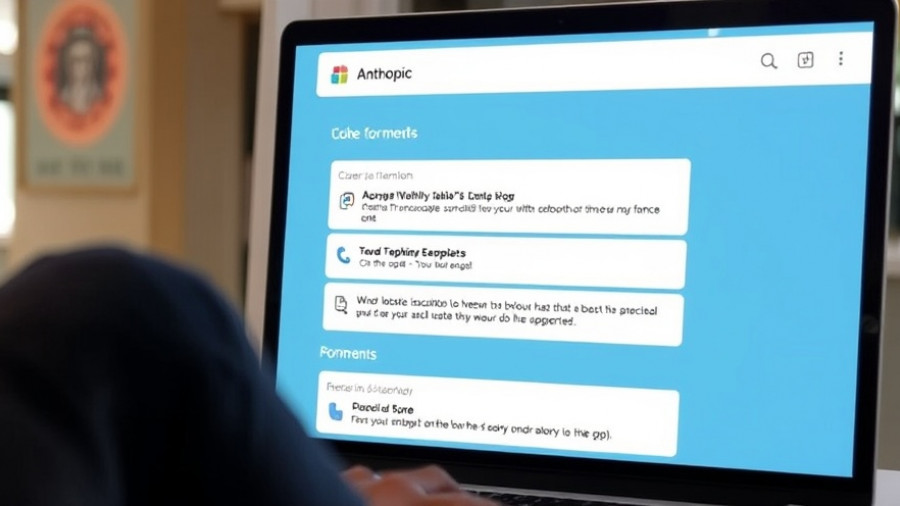
Introducing Continuous AI Security Reviews
In an age where technology is rapidly evolving, ensuring the safety of software products has never been more critical. Anthropic's latest release, the Claude Code, now offers developers an always-on AI security review system capable of detecting vulnerabilities in real-time. This proactive system is engineered to prevent unsafe code from reaching production environments, marking a substantial upgrade to software development practices.
The Mechanism Behind Always-On Reviews
By integrating continuous automated security reviews into the coding workflow, Claude Code ensures that every new code change undergoes a thorough assessment as soon as it is made. This feature acts like a vigilant watchtower that intercepts potential threats before they can be exploited, underscoring the importance of security in today’s AI-driven coding landscape. Developers can summon the AI for security reviews through a simple command, ensuring that vulnerabilities such as SQL injection and cross-site scripting (XSS) are flagged and addressed early.
The Rising Security Concerns in AI Coding
Recent studies highlight a disturbing trend: nearly half of AI-generated code exhibits insecure coding practices. A GitHub survey indicated that 92% of U.S. enterprise developers at companies with over 1,000 employees utilize some form of AI coding assistance, yet this convenience poses significant risks. As more organizations integrate AI tools into their development pipelines, ensuring the security of this code becomes paramount. A recent report from CSET revealed that 45% of analyzed AI-written code samples failed to meet standard security checks. Such statistics paint a stark picture of the increasing vulnerabilities that developers must contend with.
A New Era of Cybersecurity Threats
The landscape of cyber threats is evolving, with vulnerability-based breaches skyrocketing by 124% year-over-year as of the third quarter of 2024. The exposure of serious weaknesses in platforms like Base44 illustrates the potential damage a single coding error can inflict. A vulnerability discovered by Wiz Research allowed for exploitations that could have led to unauthorized access and compromised systems, demonstrating the critical need for constant vigilance in cybersecurity.
Transitioning Towards Robust Security Practices
As organizations embrace AI tools, it's imperative that they adapt their security practices accordingly. Claude Code’s approach emphasizes the importance of integrating continuous reviews into the development process. This not only enhances code integrity but significantly reduces the risks associated with deploying unvetted software. By using existing continuous integration and deployment (CI/CD) pipelines, Claude Code allows for a seamless blend of security and productivity, essential in the fast-paced world of technology.
Future Implications for AI Development and Security
Looking ahead, as AI technologies become standard in coding practices, the relevance of security will only grow. Developers must prioritize robust security measures, focusing not just on functionality but on the integrity of their code. This includes employing tools that offer automatic scanning and real-time feedback, ensuring that vulnerabilities are caught and mitigated swiftly.
The deployment of AI-assisted coding tools marks a significant shift in software development, yet the associated security risks loom large. As innovations like Claude Code bring forth enhanced capabilities, they simultaneously mandate a shift in how developers view and implement security. The journey towards secure coding practices is ripe with challenges but paved with potential for improvement.
It is essential for developers to remain proactive in their approach to software security—leveraging tools and techniques that can preemptively identify and address vulnerabilities. This not only protects individual systems but contributes to a more secure digital landscape overall. The future of code development lies in understanding that convenience must be matched with diligence and awareness.
Call to Action
As the landscape of AI security evolves, it’s crucial for developers to stay informed and proactive by exploring the functionalities offered by AI systems like Claude Code. Consider integrating continuous security reviews in your development workflow to safeguard against the rising tide of vulnerabilities.
 Add Row
Add Row  Add
Add 




Write A Comment